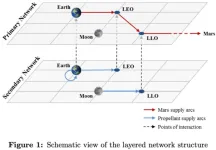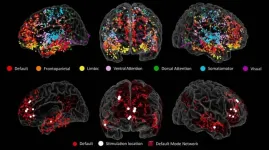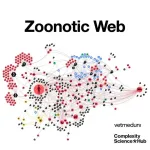(Press-News.org) Women who carry a particular form of a pain gene are more likely to respond well to a common medication used to treat long-term discomfort, research shows.
In a study, women with chronic pelvic pain who had a naturally occurring variation of a gene, known as Neuregulin 3, in their DNA were more likely to experience relief after taking the painkilling drug gabapentin.
Targeting gabapentin use to those with this genetic marker would avoid ineffective treatment and unwanted side-effects in those who are unlikely to respond, experts say.
The findings could improve use of gabapentin in treating chronic pelvic pain – a persistent, disabling pain which affects one in four women worldwide.
Gabapentin, often prescribed for chronic pain, targets the central nervous system – which carries messages between the brain and nerves throughout the body – to reduce heightened pain sensitivity that affects people with long-standing conditions.
The findings, from the University of Edinburgh, follow a previous study from the same team which suggested that gabapentin treatment was beneficial for certain women, with moderate improvements in the worst or average pelvic pain for 40 per cent of participants.
The latest study, in collaboration with the University of Oxford, studied the genetic make-up of 71 women with chronic pelvic pain who received gabapentin – 29 responded to the medication and 42 saw no improvement.
They found a naturally occurring variation of the gene Neuregulin 3, which determined who would respond to gabapentin. The gene gives rise to a protein of the same name, found in the brain and spinal cord, which is involved in pain sensation and transmission.
The findings offer fresh insight into the underlying mechanisms behind chronic pain, and may have implications for other conditions besides pelvic pain, experts say.
The team say more research is needed to confirm the findings in a larger population of women. Their work is being supported by Edinburgh Innovations (EI), the University’s commercialisation service, which has patented the discovery and is seeking a commercial partner to further the research.
The study is published in the journal iScience: https://www.cell.com/iscience/fulltext/S2589-0042(24)01595-5 [URL will become active after embargo lifts]. It was funded by the EME programme – a partnership between the National Institute for Health and Care Research (NIHR) and the Medical Research Council (MRC) – and the Scottish Government's Chief Scientist Office.
The study’s lead author, Dr Scott Mackenzie from the University of Edinburgh’s Centre for Reproductive Health said: "A genetic factor that can predict how well gabapentin will work in patients offers the prospect of tailored treatment, and provides invaluable insights into understanding chronic pain. We hope eventually to use this genetic marker to optimise personalised treatment decisions and minimise adverse effects for women with chronic pelvic pain.”
Dr Susan Bodie, EI’s Head of Business Development for the College of Medicine and Veterinary Medicine, said: “Isolating this single genetic marker is an important discovery that could ultimately help refine treatments for millions of women worldwide who suffer from chronic pelvic pain, as well as increasing our understanding of its role in other pain conditions. We believe this is an exciting opportunity for collaboration with a commercial partner who can help translate the research into a clinical setting.”
For further information, please contact: Jess Conway, Press and PR Office, 07979 446 209, jess.conway@ed.ac.uk
END
Tell-tale gene affects success of drug used to treat chronic pain
2024-07-15
ELSE PRESS RELEASES FROM THIS DATE:
Study reveals how an anesthesia drug induces unconsciousness
2024-07-15
There are many drugs that anesthesiologists can use to induce unconsciousness in patients. Exactly how these drugs cause the brain to lose consciousness has been a longstanding question, but MIT neuroscientists have now answered that question for one commonly used anesthesia drug.
Using a novel technique for analyzing neuron activity, the researchers discovered that the drug propofol induces unconsciousness by disrupting the brain’s normal balance between stability and excitability. The drug causes brain activity to become increasingly unstable, until the brain loses consciousness.
“The brain has to operate on this knife’s ...
Existence of lunar lava tube cave demonstrated
2024-07-15
A team of international scientists, under the lead of the University of Trento, Italy, has published a research study that has made a milestone discovery on the Moon knowledge.
For the first time, scientists have demonstrated the existence of a tunnel in the lunar subsurface. It seems to be an empty lava tube. The research study was published by Nature Astronomy and is the result of an international collaboration.
"These caves have been theorized for over 50 years, but it is the first time ever that we have demonstrated their existence," ...
Wyss Institute research collaboration awarded ARPA-H agreement to develop disease-agnostic immunotherapeutic RNA platform
2024-07-15
By Benjamin Boettner
With the award for up to $27 million from the Advanced Research Projects Agency for Health (ARPA-H), a collaborative research project at the Wyss Institute for Biologically Inspired Engineering at Harvard University will advance a disease-agnostic novel RNA therapeutic with the potential to treat diverse diseases, and to be effectively and rapidly deployable. By safely and naturally stimulating the “innate immune” system — the body’s first line of defense against ...
A stochastic modeling approach for interplanetary supply chain planning
2024-07-15
First of all, the problem scope and the theoretical foundation are presented. The considered ISC network is a layered network in which nodes represent points of interactions between the two layers. The two interacting networks are PN which delivers cargo from Earth to Mars and SN that is responsible for the propellant supply along the way, respectively. They share the same nodes but comprise different arcs based on their distinct purposes. The nodes are defined as surface nodes (celestial bodies ...
When certain boys feel their masculinity is threatened, aggression ensues
2024-07-15
It’s been long established that certain men become aggressive when they see their manhood as being threatened. When does this behavior emerge during development—and why? A new study by a team of psychology researchers shows that adolescent boys may also respond aggressively when they believe their masculinity is under threat—especially boys growing up in environments with rigid, stereotypical gender norms.
The findings, reported in the journal Developmental Science, underscore the effects of social pressure that many boys face to be stereotypically masculine.
“We know that not all men respond aggressively to manhood threats—in ...
Safe, successful pregnancies possible after alloHCT
2024-07-15
Findings refute former consensus that pregnancies post-transplant are nearly impossible, highlight need for increased fertility counseling
(WASHINGTON, July 15, 2024) — Despite treatment-related fertility challenges, female patients can become pregnant and give birth to healthy children after undergoing allogeneic hematopoietic cell transplantation (alloHCT), according to a study published in Blood.
During alloHCT, stem cells from a healthy donor are transplanted to individuals with hematologic cancers or benign hematologic disorders such as leukemia and sickle cell disease. Procedural improvements in the administration of alloHCT ...
Santiago Núñez-Corrales on ‘NCSA’s Mission in Quantum Computing’
2024-07-15
Editor’s note: This is part of a series of virtual essays from NCSA experts on current topics impacting the field of high-performance computing and research.
NCSA’s Mission in Quantum Computing
By Santiago Núñez-Corrales, NCSA Quantum Lead Research Scientist
The fact that physical laws in our universe contain the recipe to perform computation is nothing short of extraordinary. John Archibald Wheeler described how intricate and intense the relationship is between physics and information in his foundational paper in 1991, one that bears profound consequences ...
Study pinpoints origins of creativity in the brain
2024-07-15
Have you ever had the solution for a tough problem suddenly hit you when you’re thinking about something entirely different? Creative thought is a hallmark of humanity, but it’s an ephemeral, almost paradoxical ability, striking unexpectedly when it’s not sought out.
And the neurological source of creativity—what’s going on in our brains when we think outside the box—is similarly elusive.
But now, a research team led by a University of Utah Health researcher and based in Baylor College of Medicine has used a precise method of brain imaging to unveil how different parts of the brain ...
Breakthrough wildlife tracking technology that adheres to fur delivers promising results from trials on wild polar bears
2024-07-15
TORONTO, July 15, 2024 – Studying polar bears just became a lot easier with new “burr on fur” trackers which confirmed scientists’ belief that subadult and adult males spend most of their time on land lazing around, conserving energy until the ice returns.
A multi-institutional research team led by York University and including the University of Alberta, Environment and Climate Change Canada, Manitoba Sustainable Development, Ontario Ministry of Natural Resources and Forestry, and Polar Bears International, used three ...
Study unveils complexity of zoonotic transmission chains
2024-07-15
[Vienna, July 11 2024] — Researchers from the Complexity Science Hub and the University of Veterinary Medicine Vienna have dissected the complex interactions involved in zoonoses, which affect worldwide over two billion people annually. They introduce the concept of a "zoonotic web," a detailed network representation of the relationships between zoonotic agents, their hosts, vectors, food sources, and the environment.
"Zoonotic diseases, which can be transmitted between animals and humans, are a significant public health concern, and our study highlights the importance of a holistic approach to understanding and managing these ...



